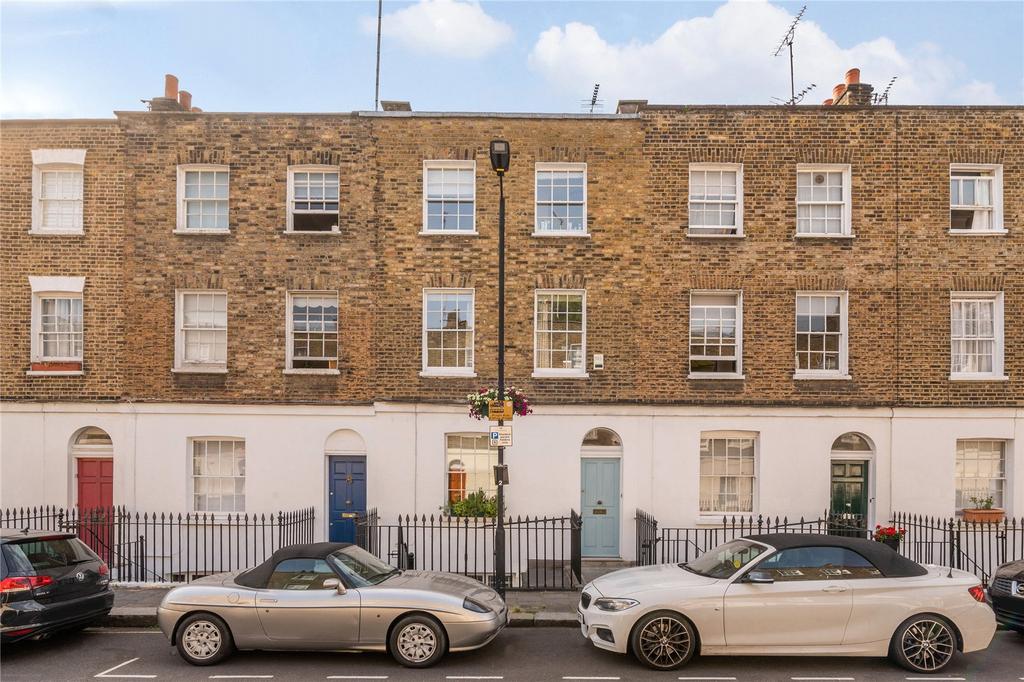Housing Associations – what’s your greatest asset?

It is commonplace to say our staff are our greatest asset. Or to use the cliche – residents at the heart of everything we do. And while I don´t decry either sentiment, our greatest asset is the most neglected – the houses we own.
Our assets (another word for homes, but one that frames them as something with value, that can decrease or increase over time), are our greatest asset. They are very valuable (in London they are worth about £400,000 each), very desirable (frequently more than 100 households apply for a vacancy), and for the resident the homes are affordable, secure and regulated.
So why do we have a problem with dissatisfaction, that sets once the boxes are unpacked? Why do Housing Associations have such bad press?
There are other reasons (location, and poor customer service, for example), but I believe the underlying reason for most dissatisfaction is the disappointing quality of the home, as I explained previously.
The Regulator requires this issue to be addressed, and says
“registered providers must have an accurate record at an individual property level of the condition of their stock, based on a physical assessment of all homes, and keep this up to date”.
RSH Consumer standards, Required outcome 1.
This is a data question and it is also a resident engagement question.
For years I worked for an HA that visited every tenant in their home annually. The idea, at least originally, was to find out what the resident had to say about their home and neighbourhood. We asked
- What do you like/dislike about your home?
- Can you show me round and tell me about any features or problems you want me to know about?
- Would you move if you could?
- What do you think of the local area?
- Do you find it easy to get about within the home?
- How is it in the block? Do you talk to your neighbours?
The questions were open to allow the resident to bring their own experience of the house to the attention of their Housing Officer, and we tried to understand what specifically could be done to improve things (eg additional storage, more power points, retile the bathroom), but also to observe if there was anything unacceptable about the home (eg not safe, significantly overcrowded, unpleasantly hot or cold). The idea was to combine resident feedback with stock condition information, as we worked to renew and upgrade the stock over time.
So here is my proposal.
Each HA should work through their stock, home by home, with their residents and building experts, establishing clearly the physical needs of the home. Each home would have a plan to upgrade it to modern standards over a realistic period (five, ten or 15 years perhaps), influenced by resident preferences, choices and requirements. The basic or “lettable” standard) should be negotiated with tenants, housing officers and maintenance staff, and will need to be affordable. Safety and thermal efficiency will be priority areas, but it maybe that residents would want more emphasis on storage, space (more open plan, more extensions), noise reduction or kitchens, for example. There will be a realistic level of investment in each home, which will enhance its value and prevent it from deteriorating or becoming a liability.
The work would come together in one big Asset Management system that would optimally plan investment in the stock to produce the best outcomes soonest. Crucially it would link specific programmes like building safety, sustainability and cyclical programmes so that all investment in a property is working together to enhance the home and the tenant experience. And this includes the day to day repairs requests received from residents. There will be four or five of these a year on average, and better IT would be programmed to optimise spend.
It needs to be said that if a specific home is sub-standard (eg a lower ground damp flat) and the cost of making it warm and safe is too high, then the HA should sell it on the open market and offer, build or buy something better for the resident to move into. It also needs to be said that the plan should be voids led to reduce inconvenience and cost.
The resulting plan is costed, funded and allows every resident and every department to see the plan for my home. The strategic asset investment programme gives full transparency. In addition the system needs to dynamically align with the day to day repairs and property related complaints raised by tenants.
Clearly housing staff would be able to interrogate the Asset Management system, but real progress will only start when machine learning dynamically brings the property needs to the attention of the housing officer. Complaints and asks can finally be seen and understood in context, making sure that decisions are based on data rather somewhat randomly. Working like this, utilising big data to surface systemic issues behind resident complaints would help HAs put things right. The dynamic investment plan will change as the stock needs change and tenant views evolve.
By carrying out a 100 % stock condition survey, including an annual visit to see the tenant in their home, updating the underlying asset management database continually to reflect everything that is currently known about the home, listening carefully to tenant experiences, opinions and requirests, the important cause of tenant dissatisfaction could be removed. We would also have reliable records to show residents, auditors and regulators.
